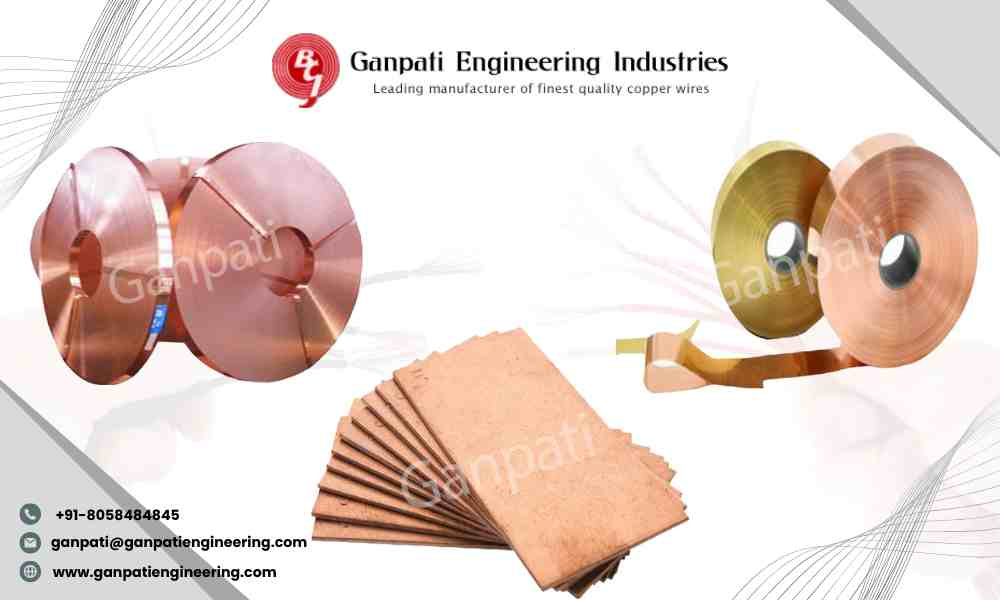Copper has long been valued for its remarkable properties, making it a cornerstone in various sectors. Copper strips, in particular, stand out due to their excellent electrical conductivity, resistance to corrosion, and ability to be shaped easily. These thin, flat pieces of copper are produced through rolling processes that ensure uniformity and strength, allowing them to perform reliably in demanding environments. Experts in materials engineering emphasize how these qualities make them ideal for modern applications where efficiency and durability are key. This blog explores the primary ways these versatile materials are used across industries, highlighting their positive contributions to innovation and sustainability.
Electrical and Electronics Sector
In the world of electricity and gadgets, copper strips play a pivotal role. Their high conductivity means they can carry electrical currents with very little loss, which is crucial for powering homes, offices, and factories efficiently.
Power Distribution and Switchgear
One of the standout uses is in power distribution systems. Here, copper strips serve as busbars, which are essential for safely transporting large amounts of electricity within switchgear panels. These components help in managing voltage levels and protecting against overloads, ensuring a steady supply to end users. Materials scientists note that the low resistance of copper reduces heat buildup, leading to safer and more reliable operations in substations and industrial plants.
Transformers and Coils
Transformers rely heavily on copper strips for their windings. The material’s ability to handle high currents without degrading makes it perfect for stepping up or down voltage in power grids. This efficiency translates to less energy waste, supporting global efforts toward greener energy solutions. In addition, copper’s thermal properties allow transformers to operate at optimal temperatures, extending their lifespan and reducing maintenance needs.
Electronic Components
In electronics, copper strips are integral to printed circuit boards and connectors. They form the pathways that link chips, resistors, and other parts, enabling seamless data transfer in devices like smartphones and computers. The flexibility of copper allows for intricate designs, which is why it’s favored in compact, high-performance gadgets. According to engineering studies, this leads to faster processing speeds and better overall device reliability.
Automotive and Transportation
The automotive world benefits greatly from the adaptability of copper strips. As vehicles become more advanced, especially with the rise of electric models, copper’s role grows even more important.
Wiring and Electrical Systems
Modern cars contain extensive wiring harnesses made from copper strips, which power everything from lights to infotainment systems. The material’s conductivity ensures quick signal transmission, enhancing features like advanced driver-assistance systems. In electric vehicles, copper helps in efficient battery charging and motor operation, contributing to longer ranges and faster acceleration.
Heat Management in Engines
Copper strips are used in radiators and heat exchangers within engines. Their superior heat transfer capabilities keep components cool, preventing overheating and improving fuel efficiency. This is particularly valuable in high-performance vehicles where maintaining optimal temperatures is essential for peak operation.
Braking and Safety Features
In braking systems, copper strips appear in sensors and connectors that monitor performance. Their reliability ensures that safety mechanisms like anti-lock brakes function flawlessly, providing drivers with confidence on the road. Transportation experts highlight how copper’s durability withstands vibrations and harsh conditions, making it a trusted choice for these critical applications.
Construction and Architecture
Building projects incorporate copper strips for both functional and aesthetic reasons. The material’s natural patina develops over time, adding a timeless appeal while offering practical benefits.
Roofing and Cladding
Copper strips are formed into sheets for roofing and exterior cladding. They provide excellent weather resistance, protecting structures from rain, wind, and sun without fading. Architects appreciate how copper enhances building designs, creating elegant facades that blend with natural surroundings. This use promotes longevity, as copper roofs can last for decades with minimal upkeep.
Plumbing and HVAC Systems
In plumbing, copper strips contribute to pipes and fittings that deliver clean water. The material’s antimicrobial qualities help maintain hygiene, reducing the risk of contamination. For heating, ventilation, and air conditioning, copper is used in coils and ducts, where its thermal efficiency ensures comfortable indoor environments year-round. Building engineers confirm that these systems run more smoothly and use less energy thanks to copper’s properties.
Aerospace and Aviation
High above the ground, copper strips support the demanding needs of aircraft. Their lightweight yet strong nature fits perfectly in this field.
Aircraft Wiring and Systems
Bare Copper Strip is often employed in wiring harnesses for planes, where it handles complex electrical networks. Without any coating, it offers pure conductivity, ideal for navigation and communication systems. Aerospace specialists point out that this purity minimizes signal interference, ensuring safe flights.
Heat Dissipation Components
In engines and avionics, copper strips aid in heat sinks that manage temperatures during flight. Their ability to dissipate heat quickly keeps sensitive equipment operational, even at high altitudes. This reliability is key for missions in commercial, military, and space exploration vehicles.
Amid these diverse uses, it’s worth noting that reliable suppliers play a vital role in maintaining quality. For example, Ganpati Engineering Industries has been a key player in providing high-standard copper materials, supporting the seamless integration of these products into various sectors.
Renewable Energy and Sustainability
As the world shifts toward clean energy, copper strips are at the forefront, enabling efficient technologies.
Solar Panels and Wind Turbines
In solar setups, copper strips connect photovoltaic cells, maximizing energy capture from the sun. Their low resistance means more power reaches the grid. Similarly, in wind turbines, copper is used in generators and cabling, harnessing wind effectively. Renewable energy experts affirm that copper’s efficiency boosts output, accelerating the adoption of green power.
Energy Storage Solutions
Batteries and supercapacitors incorporate copper strips for electrodes and connectors. This enhances charging speeds and storage capacity, vital for grid stability. With copper, energy systems become more resilient, storing excess power from renewables for later use.
Manufacturing and Industrial Equipment
Factories rely on copper strips for machinery that demands precision and endurance.
Heat Exchangers and Cooling Systems
Copper strips form fins in heat exchangers, facilitating rapid cooling in processes like chemical manufacturing. Their thermal prowess ensures consistent performance, optimizing production lines. Industrial designers value how this leads to higher throughput and energy savings.
Connectors and Springs
In automated equipment, copper strips make springs and terminals that withstand repeated use. Their springiness and conductivity keep machines running smoothly, from assembly robots to conveyor systems.
Telecommunications and Data Centers
The digital age thrives on fast connections, where copper strips excel.
Cabling and Networking
Copper Wire Manufacturers produce strips that go into cables for the internet and phone lines. These provide stable signals over long distances, supporting high-speed data transfer. Telecom professionals explain that copper’s affordability and performance make it a staple in expanding networks.
Server and Storage Infrastructure
Data centers use copper strips in power supplies and cooling units. They handle the intense electrical loads required for cloud computing, ensuring uptime and efficiency.
Conclusion
The applications of copper strips in modern industries demonstrate their indispensable value, from enhancing electrical efficiency to supporting sustainable energy. Their unique combination of conductivity, durability, and versatility drives progress in fields like automotive, construction, and renewables. As technology evolves, experts anticipate even broader uses, solidifying copper’s place in future innovations. Embracing these materials not only boosts performance but also contributes to a more efficient and eco-friendly world.



